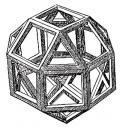Animal painter
From The Art and Popular Culture Encyclopedia

|
Related e |
|
Featured: |
An animal painter is an artist who specializes in or is known for their skill in the portrayal of animals, essentially up to about 1900. During the last century "wildlife artist" became the preferred term for contemporary animal painters.
Especially in the 17th century, animal painters would often collaborate with other artists, who would either paint the main subject in a history or mythological piece, or the landscape background in a decorative one. Frans Snyders, a founder of the Baroque animal painting tradition, often provided the animals, and also still-lifes of food, for Peter Paul Rubens; a different landscape specialist might provide the background. In the Dutch Golden Age such specialists tended to produce smaller genre paintings concentrating on their specialism. Animal painters came low down in the hierarchy of genres, but the best painters could make a very good living; many royal and aristocratic patrons were more interested in their subject matter than that of the more prestigious genres. Mainly in England, there were still more specialized painters from the 18th century who produced portraits of racehorses and prize specimens of livestock, whereas in France animal subjects continued to be decorative capriccios often set around garden statuary.
Animalier as a collective plural noun, or animalier bronzes is also a term in antiques for small-scale sculptures in particular, but also paintings, of animals, of which large numbers were produced, often mass-produced, in 19th century France and elsewhere. Although many earlier examples can be found, animalier sculpture became more popular, and reputable, in early 19th century Paris with the works of Antoine-Louis Barye (1795–1875), for whom the term was coined, desisively, by critics in 1831. By the mid-century, a taste for animal subjects was very widespread among all sections of the middle-classes.
Contents |
Prominent animal painters
Before 1800
- Jan Brueghel the Elder
- Giovanni Benedetto Castiglione
- Alexandre-François Desportes
- Karel Dujardin
- Jan Fyt
- Sawrey Gilpin
- Melchior d'Hondecoeter
- Jean-Baptiste Huet
- George Morland
- Jean-Baptiste Oudry
- Paulus Potter
- Roelandt Savery
- Frans Snyders,
- George Stubbs
- Paul de Vos, brother of Cornelis, brother-in-law of Frans Snyders
- Jan Weenix
After 1800
By animal
To be classified
Wildlife art
Wildlife art is one of humanity's earliest art forms, dating back to prehistoric cave paintings such as those found at the grotto of Lascaux in France.
Wildlife art is the most widely recognized of human art forms as its depiction of the natural world, and the wildlife inhabiting it is a universal theme covering all cultures on all continents.
Modern wildlife art
Modern wildlife artists most often seek to enrich and inspire public appreciation of humanity's relationship with nature by focusing their art on the depiction of mammals, birds, sealife and insects. Most American artists try to depict their subjects in a photo realistic view but other artists have used many different mediums in the past. Artists also sculpt and draw their wild subjects.
Sometimes animal mounts are put into the category of wild art, but it there are clear distinct differences. Taxidermy is the work of handling dead animals (usually killed by hunters) and mounting or "stuffing" the animals bodies.
Artists
There are hundreds of internationally acclaimed painters and sculptors who have looked to the relationship between people and wildlife as a means of exploring humanity’s place in the world. Important forerunners of the modern style of wildlife sculpture include Rembrandt Bugatti and François Pompon. Modern wildlife art painters include John Clymer, Kim Donaldson, Peter Gray, Gary Hodges, Terry Jackson, Michael Lumbrazo, Dave Merrick, and Lanford Monroe.
Wildlife conservation
Many wildlife artists or art groups hold benefits to support wildlife conservation. Sometimes artists choose to depict scenes that stir emotions, such as Robert Bateman's "Driftnet – Pacific White-sided Dolphin and Laysan Albatross", in which a small dolphin and bird drown due to fishing nets. Many artists will also participate in contests held by wildlife conservation organizations.
On July 10th, 2008, at Scheveningen beach in (The Netherlands), the local museum (Muzee Scheveningen) sponsored the installation of an 18-metre-long life-size sculpture of a sperm whale on the dunes, in imitation of a stranded whale. Belgian artist Dirk Claesen, also known as Zephyr, created the exhibit to provoke people to a more responsible attitude towards whales.
See also
See also


